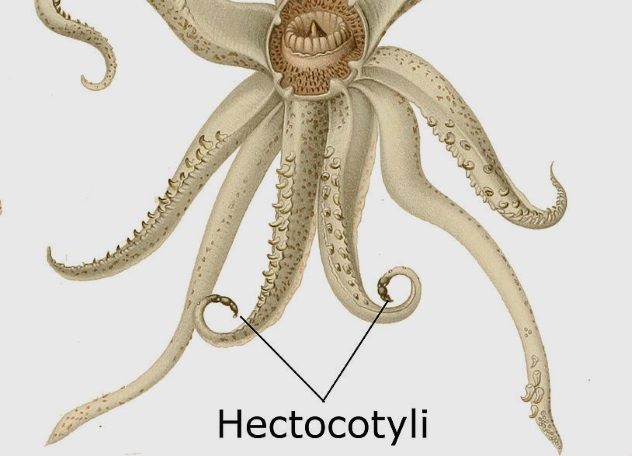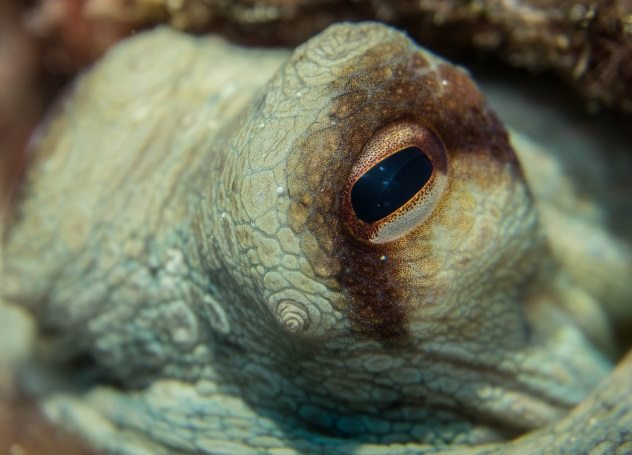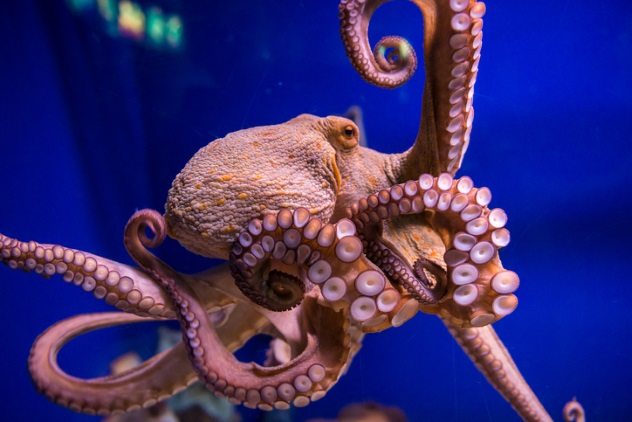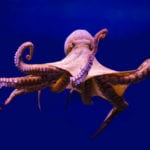 Our World
Our World  Our World
Our World  Pop Culture
Pop Culture 10 Incredible Female Comic Book Artists
 Crime
Crime 10 Terrifying Serial Killers from Centuries Ago
 Technology
Technology 10 Hilariously Over-Engineered Solutions to Simple Problems
 Miscellaneous
Miscellaneous 10 Ironic News Stories Straight out of an Alanis Morissette Song
 Politics
Politics 10 Lesser-Known Far-Right Groups of the 21st Century
 History
History Ten Revealing Facts about Daily Domestic Life in the Old West
 Weird Stuff
Weird Stuff 10 Everyday Products Surprisingly Made by Inmates
 Movies and TV
Movies and TV 10 Actors Dragged out of Retirement for One Key Role
 Creepy
Creepy 10 Lesser-Known Shapeshifter Legends from Around the World
 Our World
Our World 10 Science Facts That Will Change How You Look at the World
 Pop Culture
Pop Culture 10 Incredible Female Comic Book Artists
 Crime
Crime 10 Terrifying Serial Killers from Centuries Ago
Who's Behind Listverse?

Jamie Frater
Head Editor
Jamie founded Listverse due to an insatiable desire to share fascinating, obscure, and bizarre facts. He has been a guest speaker on numerous national radio and television stations and is a five time published author.
More About Us Technology
Technology 10 Hilariously Over-Engineered Solutions to Simple Problems
 Miscellaneous
Miscellaneous 10 Ironic News Stories Straight out of an Alanis Morissette Song
 Politics
Politics 10 Lesser-Known Far-Right Groups of the 21st Century
 History
History Ten Revealing Facts about Daily Domestic Life in the Old West
 Weird Stuff
Weird Stuff 10 Everyday Products Surprisingly Made by Inmates
 Movies and TV
Movies and TV 10 Actors Dragged out of Retirement for One Key Role
 Creepy
Creepy 10 Lesser-Known Shapeshifter Legends from Around the World
10 Incredible Facts That Prove Octopuses Are Amazing
Octopuses have blue blood, three hearts, and have been the object of maritime horror stories for centuries. Here, we’ve gathered together some of the more obscure, bizarre, and quite frankly mind-blowing facts that make these weird and wonderful creatures the most fascinating mollusks one could ever have the pleasure of interacting with.
Just for the sake of clarity, the correct plural of the word “octopus” is “octopuses,” or “octopodes” if you prefer to use the Greek plural, as “octopus” itself is a Greek word.[1] We will be using the English plural in this article.
10 They Can Hunt On Dry Land
Octopuses have gills like fish, which means they depend on water to breathe. Despite this, many species of octopus leave the water for short periods of time to hunt for stranded crabs on land, and some have been known to escape their tanks in captivity and cross rooms to eat fish in tanks on the other side. Some have even left their tanks and made their way back to the ocean! A famous example of such an escape is when Inky, an octopus from New Zealand, escaped through a gap in his tank and slithered along the floor before locating a drainpipe that led back to the ocean. But how can octopuses survive on land if they can’t breathe air?
Octopuses use a process called passive diffusion, which means that as long as their skin is wet, they can absorb oxygen through the water on their skin instead of through their gills. This allows them to leave their watery abodes for short periods of time to hunt, or in the case of Inky, to escape from captivity.[2] On that note, Inky isn’t the only octopus to have made headlines with his daring escapades.
In 2010, an octopus named Sid, who lived in Dunedin’s Portobello Aquarium (also in New Zealand) tried to escape multiple times. He once hid in a drain for five days before being discovered, and another time, he was caught making a dash across the floor to the door. After two other escape attempts, he was finally set free. A previous occupant of Sid’s tank, an octopus named Harry, had also escaped in the same manner ten years earlier and was found halfway up the steps to the nearby University of Otago’s Marine Laboratory shortly after. “They can be very intelligent,” said the manager of the NZ Marine Studies Center. “Once they have worked out there is an escape route, it can be very difficult to stop them.”
9 They Use Weapons, Carry Portable Forts, And Make Barricades

Some species of octopus have been observed carrying snail, clam, and coconut shells and even human refuse such as old beer bottles. They use these items as portable lairs and can travel considerable distances, carrying even large items under their arms as they lumber across the seafloor. If a predator approaches, they’ll quickly duck inside their home or assemble it around themselves if it’s made of two halves of coconut or clam shells. They also use these portable forts to lie in wait for unsuspecting prey. Many octopuses that prefer more permanent lairs will barricade the entrance to their homes using stones, shells, and sticks. They have been observed in both the wild and captivity spending hours hunting for just the right size objects to make their barricades.
If all this wasn’t cool enough, octopuses of some species have also been observed using weapons, which is understandable when one takes into account the fact that their bodies are very soft and squishy and almost everything in the sea wants to eat them. While some octopuses will throw shells at each other, others use a far more extreme form of weaponry. Large female seven-arm octopuses (which can reach up to 4 meters [13 ft] long) have been observed holding egg-yolk jellyfish in their arms with the jellyfish’s sticky, stinging tentacles hanging down below them. While scientists aren’t entirely sure of the cephalopods’ motivations, they theorize that they consume the nutrient-dense parts of the jellyfish first and then swim along, using the tentacles as a form of self-defense and even as a way to catch more nutrient-dense food that they wouldn’t be able to catch otherwise.[3]
Blanket octopuses also use stinging tentacles as a defense mechanism, but in a slightly different way. The tiny males of the species, as well as females that haven’t yet grown past 7 centimeters (2.7 in), have been observed using highly venomous Portuguese man o’ war tentacles as weapons. The octopus acquires these by ripping them off the man o’ war and then attaching them to each row of suckers on their four dorsal arms.
8 They Have Really Bizarre ‘Penises’

Octopuses exhibit many cases of extreme sexual dimorphism, one of the most notable being the seven-arm octopus. As mentioned previously, the female of the species can reach up to 4 meters (13 feet) long, but the male only reaches a maximum length of about 30 centimeters (12 in)! One of the ways tiny males deal with such extensive size differences is to develop a massive hectocotylus (an arm specialized to deliver sperm). The hectocotylus of the male argonaut (aka paper nautilus) can grow up to 2 centimeters (0.8 in) long, which doesn’t sound like much until you take into account the fact that the octopus itself only reaches about 1 centimeter (0.4 in) long, so his penis is twice as long as his entire body. The term “hectocotylus” actually means “worm of 100 suckers.” In 1829, a pioneering French naturalist named Georges Cuvier discovered one of these specialized arms inside a female octopus and assumed it was a parasitic worm, which is how this fascinating appendage developed such an odd name.
At the tip of the hectocotylus is something called the ligula, which transfers spermatophores into the female’s oviduct. In some species of octopus, the ligula contains erectile tissues that engorge in much the same way mammalian copulatory organs do when sexually aroused, making octopuses the only known soft-bodied creatures that are able to get erections.[4]
Some species of octopus merely have to place their specialized arm into the female’s gill slot and leave it in there (sometimes for hours) while they deposit a sperm package, but the smaller ones need to take a more extreme approach. Some tiny males actually have to rip their hectocotylus off and give it to the female, or in some cases, the arm will swim to her on its own and attach itself to her body before crawling its way into her mantle cavity, where she can store it until she is ready to fertilize her eggs. Some female octopuses store multiple hectocotyli in their mantles at once, meaning their eventual brood will be fathered by multiple males.
7 Reproduction Is Almost Always Deadly
Reproduction isn’t always fun and games for octopuses, and in many cases, it leads to the death of both the male and the female. To begin with, some female octopuses have been observed strangling and then cannibalizing the male post-coitus. Males who survive the ordeal of mating without being eaten will often then go into a state called senescence. The male will stop eating and lose weight rapidly. His skin will lose coloration, and he will begin to develop white lesions that will not heal. He will then lose coordination and eventually be eaten by a passing predator or even sometimes crawl onto the beach to die.[5]
Death is much slower for the female. She’ll find a safe place to lay her eggs. (Some species lay hundreds of thousands of eggs at a time.) Once she has laid them, she’ll guard them tirelessly while continuously cleaning and caring for them. This process takes months, and the female will refuse to eat during this time, so her body will begin to digest itself as she slowly starves to death.
One species of deep-sea octopus has the longest brooding time of all known animals on Earth. In May 2007, researchers at the Monterey Bay Aquarium Research Institute observed a brooding octopus clinging to a rocky ledge in the Monterey Canyon about 1,400 meters (4,600 ft) below the ocean surface. The researchers returned to her brooding spot multiple times over a period of four and a half years as she slowly grew more pale and haggard-looking while caring for her eggs. The last time they saw her was in September 2011. When they returned after that, nothing was left but her empty egg cases.
When the eggs finally hatch, the female uses water jets from her gills to push the baby octopuses into the ocean. Once this is accomplished, she will succumb to senescence and the effects of starvation, swimming around aimlessly until she dies or is eaten.
6 They Have A Legal Status Previously Afforded Only To Vertebrates

While it may seem obvious to many of us that animals have a type of consciousness (though it may be very different from ours) it has taken science a while to officially catch up. In July 2012, octopuses became the only invertebrate to get a shout-out in The Cambridge Declaration on Consciousness. This declaration lists the animals recognized by neuroscientists as “possessing the neurological substrates of consciousness.”
Later, in 2013, cephalopods became the first invertebrates protected under the European Union’s “Protection of Animals Used for Scientific Purposes” directive. Cephalopods, especially octopuses and squid, have been used extensively in animal experimentation for centuries, but until recently, their welfare had been largely disregarded in EU regulations. The new directive calls for the same EU legal protection previously afforded only to vertebrates.
Under the new rules, all experimental procedures likely to cause pain, suffering, distress, or lasting harm to any live cephalopod, adult or juvenile, must be regulated. The capture of live cephalopods in the wild must be undertaken in a way that will not cause pain or distress, and once in captivity, light intensity must be similar to that which the animal would experience in the wild, including simulated dusk and dawn. Cephalopods must be assessed daily for signs of pain, suffering, or distress. General anesthesia is required during all experimental procedures, and all necessary killing must be done as humanely as possible. These new regulations came about after a panel of scientists concluded that there was “scientific evidence of cephalopod’s ability to experience pain, suffering, distress, and lasting harm.”[6]
5 They Can Detect Early Warning Signs Of Volcanic Eruptions

North of Sicily lies a small island called Stromboli, which is home to one of the world’s most active volcanoes. Mt. Stromboli erupts once every 20–30 minutes and has been doing so for thousands of years. Much of the surrounding marine life is in constant danger of being injured or killed by debris from these eruptions, but somehow, octopuses living nearby always manage to get clear of the danger zone before each eruption begins. Marine biologists interested in learning how the octopuses time their escapes found that they can hear infrasound, which is sound lower than human ears can detect.[7] Octopuses can hear the sounds of an impending eruption and escape to safety before it begins. They then return to dine on the other marine animals injured by falling rocks and debris.
For a long time, scientists assumed octopuses were deaf. However, new research shows that they (and many other cephalopods) hear so well that noise above a certain frequency can actually maim them, which can lead to their deaths in the wild. Researchers administered noise to octopuses in captivity in the form of a pitch sweep from 50 to 400 hertz at a volume equivalent to a balloon popping. This noise was played in short sweeps over two hours. Over the next four days, test subjects were killed and examined at different times to assess whether any damage had occurred in their statocysts. (The statocyst is a fluid-filled compartment in the head which is responsible for hearing, spatial orientation, and balance.) In some cases, large holes were torn in the sensory epithelium of the statocyst, and these lesions increased in size over the days following the noise exposure. It was also found that hair cells and nerve fibers were missing and damaged and that plasma membranes were ruptured as a result of the noise.
“If the relatively low intensity, short exposure used in our study can cause such severe acoustic trauma, then the impact of continuous, high intensity noise pollution in the oceans would be considerable” said Michel Andre, the bioacoustics specialist who conducted the study. “For example, we can predict that since the statocyst is responsible for balance and spatial orientation, noise-induced damage to this structure could likely effect the cephalopod’s ability to hunt, evade predators, and even reproduce.”
4 Their Limbs Are Out Of This World

Octopuses don’t actually have tentacles; let’s get that out of the way first. Those long, dexterous appendages featured in a certain popular type of adult anime are actually imaginatively called “arms.” Squid and cuttlefish each have two tentacles along with their eight arms, while octopuses generally just have eight arms and no tentacles. Though tentacles do closely resemble arms, they only have a few suckers at the tip, whereas an arm has suckers running down its entire length. Each octopus arm generally contains 200 to 300 suckers, and every individual sucker can function independently of the rest, or they can work as a team to feel out and even smell and taste the surrounding environment.
Octopus arms never get tangled, and the suckers never get stuck to the octopus itself, because the arms secrete a self-recognition chemical designed specifically to aid in motor control. This skill is the first of its kind to be observed in nature. To learn more about this secretion, scientists subjected octopuses to some rather bizarre experiments in which they cut off some of their arms and then gave them back to the octopus to see what would happen.[8] The severed arms remained active for almost an hour after amputation, but during that time, they refused to grab either the still-living octopus or other severed arms from the same animal. The octopus also often wouldn’t grab the skin of its own severed limbs with its remaining arms, but it would sometimes cling to the exposed flesh at the end of a severed limb with its beak as though it were trying to lick the wound. In many cases, octopuses would eat the severed arms of other octopuses but rarely ate their own, which means, according to scientists, that they can recognize their own severed limbs. However, when the scientists peeled the skin off the arms, the octopus would eat them without discrimination.
If all that wasn’t weird enough, octopuses also have the uncanny ability to regenerate limbs they have lost. Within a day, the wound from an amputated limb will be almost fully closed. Once the wound has healed, cells and nerves form a little bulge at the amputation site, which slowly develops into a perfect replica of the original limb over the next few months.
3 Their Brains Are Mind-Blowing

“This is probably the closest we will come to meeting an intelligent alien.”
—Peter Godfrey-Smith, Other Minds.
Most readers have probably heard that octopuses are incredibly intelligent. They can open childproof containers, recognize symbols, learn from observation, and solve puzzles. They can even recognize individual humans and express whether they like or dislike the person they are recognizing. However, the uniqueness of their brains goes well beyond these more commonly known abilities.
While it’s not technically true that they have nine brains as some people claim, neuroscientists have categorized octopus brains into three main parts, containing over 500 million neurons.[9] The central brain, which is wrapped around the esophagus, contains about 50 million of these neurons. The second part of the brain, containing about 80 million, is situated in the large optic lobes behind the eyes. The rest of the neurons are situated in distributed clusters called ganglia. Eight of these ganglia are situated in the arms (one for each arm) and are responsible for working out the details of complex movements. As a result of this, every separate arm can function autonomously. The octopus will give a command with the central brain, but the ganglia in the arms take control of carrying out the actions required to complete the task. Essentially, each separate arm has “a mind of its own.”
2 They Can Edit Their Own Genes

Octopuses, squid, and cuttlefish (which comprise a group of cephalopods called coleoids) can extensively recode their own genetic instructions through a process called RNA editing. Up to 60 percent of RNA transcripts were found to have been recoded through this editing process in some species of squid and octopus.
Wired offers a basic explanation of how this works:
Many cephalopods present a monumental exception to how living things use the information in DNA to make proteins. In nearly every other animal, RNA—the middleman in the process—faithfully transmits the message in the genes. But octopuses, squid, and cuttlefish edit their own RNA, changing the message that gets read out to make proteins.[10]
Biophysicist Eli Eisenberg believes this extensive RNA editing may be responsible for the complex behavior and high intelligence seen in many cephalopod species. He suspects that it “may allow certain cephalopods to fine-tune their physiological responses to environmental variables such as temperature” and claims that this is the first example of an animal editing its own genetic makeup whenever it needs to in order to modify most of its proteins, enabling adjustments to its immediate surroundings.
One hypothesis is that some species of coleoids actually surrendered the benefits of frequently mutating DNA genomes (as seen in “regular” evolution) in favor of extensive RNA editing. “The possibility that coleoids use extensive RNA editing to flexibly manipulate their nervous system is extraordinary,” said Kazuko Nishikura, a professor at a nonprofit biomedical institute in Philadelphia. “We may learn a lot from squid and octopus brains.”
1 They Have The Most Amazing Skin In The Animal Kingdom
Octopuses are masters of disguise. The mimic octopus can morph its entire body into shapes resembling plants and other, less tasty marine animals so that predators will be less likely to attack it. Another tactic employed by octopuses is their ink, which serves as something called a pseudomorph: When escaping a predator, an octopus will shoot out a jet of viscous ink that elongates into a shape resembling the twisted arms of said octopus. This disorientates the predator, while its would-be meal shoots off in a different direction using water-jet propulsion (by pushing water through its gills).
The most remarkable disguise octopuses possess, however, is their own skin, which can take on many different colors, patterns, and textures in milliseconds to blend perfectly with the surrounding environment. This amazing feat is achieved through multiple mechanisms, which the octopus uses simultaneously to render itself invisible against rocks, plants, pebbles, sand, and even surfaces with several different textures at once, such as coral or rocks covered in algae.
The octopus has many thousands of color-changing cells called chromatophores, which are located just below the skin surface. Each chromatophore contains an elastic sac filled with pigment. These are connected to muscles which the octopus uses to expand or contract every individual chromatophore to reach its desired variation of colors. Along with this, they can change the actual texture of their skin to perfectly match the rocks or plants they are camouflaging against. The protrusions that form on their skin are called papillae and can take the shape of anything from soft bumps to raised, plant-like spikes. Three separate types of muscles control the form each papilla will take.[11]
Interestingly enough, scientists are pretty sure that octopuses are color-blind, but research has found that their skin also contains light-reflecting cells, which help them to display colors taken directly from their surroundings even if they can’t perceive the colors with their eyes.
Light-sensitive molecules called ospins have also been observed in octopus skin. While scientists haven’t quite worked out the purpose of these molecules yet, some speculate that they help octopuses to actually “see” using their skin, allowing them to adopt colors and patterns very quickly without having to wait for input from their brains.
Wrap your mind around more octopus facts on 10 Crazy Old Reports Of Octopus Attacks and 10 Incredibly Strange Cephalopods.








